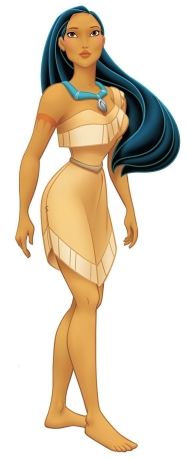 These facts are well-documented: Pocahontas was kidnapped by the men of Jamestown. Then, while in captivity, she was impregnated by and married to one of her captors, John Rolfe. Like one of the Boko Haram girls. He took her to London and showed her off. She got sick there and died far from home. She was twenty-one. Like so many missing and murdered indigenous women (#MMIW). Then she was forgotten for two hundred years. Then she was resurrected, reconstructed, and appropriated to justify the ethnic cleansing and genocide of her people.
These facts are well-documented: Pocahontas was kidnapped by the men of Jamestown. Then, while in captivity, she was impregnated by and married to one of her captors, John Rolfe. Like one of the Boko Haram girls. He took her to London and showed her off. She got sick there and died far from home. She was twenty-one. Like so many missing and murdered indigenous women (#MMIW). Then she was forgotten for two hundred years. Then she was resurrected, reconstructed, and appropriated to justify the ethnic cleansing and genocide of her people.
Not all of the details are clear.
Pocahontas was born around 1596, the daughter of Chief Powhatan. By all accounts, she was precocious, vivacious, and boisterous. As a child, she led the boys around the English fort at Jamestown, stark naked, doing cartwheels thru their town. Everyone knew the chief adored her. He had many children, most through the wives of vassal villages to cement their allegiance to him. But she was his child through his wife from his own village, the wife he loved. And she was his youngest and last child, for her mother probably died giving birth to her. Her real name was Matoaka. Pocahontas was a nickname meaning “little wanton one”, what we might call “wild thing”.

Pocahontas supposedly sparing John Smith. She would have been eleven years old at the time. In most paintings, her skin is white.
In 1607, the people of Jamestown were starving. Of ninety, fifty had died. In their desperate search for food, they attacked local villages. The Powhatan guard captured John Smith, their red-haired, red-bearded warrior. Brought before Chief Powhatan, he concocted a story, that they were fleeing the Spanish and were blown off course. They would be rescued soon, he said. May we have some corn? The myth is that Powhatan ordered the execution of Smith, but Pocahontas intervened and saved him. It is true that among many Native cultures, women had the power of clemency, but Pocahontas would have been about eleven years old. In reality, Powhatan cut a deal with Smith, essentially turning Jamestown into a vassal state, adopting John Smith as his loyal son, and taking the colonists’ weapons, including two cannons and a large grindstone. In return, Powhatan offered them corn. Smith took the deal; Pocahontas probably had nothing to do with it.

She was painted in whiteface and paraded around London as a model Indian.
The English were poor vassals. Still starving, they attacked neighboring villages. Powhatan subjected them to an embargo.
Starving again, the English of Jamestown resorted to cannibalism. In 1610, they abandoned their colony and left. As their vessel sailed out of Chesapeake Bay, they encountered another vessel sailing in. It was England providing more food and bodies to sustain the colony. They turned their boat around.
Three years later, tensions between Jamestown and Powhatan continued to simmer. The English still wanted their cannons and grindstone back. Pocahontas was now 17. By some accounts, she was married to a Native man named Kocoum and had a child. Because Powhatan feared the English might kidnap her, she moved out of her father’s village to another up Potomac Creek. But the English found her, killed her husband, and took her captive.
Powhatan paid her ransom, so the English demanded a second ransom. Pocahontas’ captivity dragged on. They allowed relatives to visit her, but they would not release her. She married John Rolfe, the founder of tobacco farming in the colonies, gave birth to a child, and converted to Christianity. We have no idea how sincere she was. We do know she was a teenage captive at the time. We do know that her uncle, a Powhatan leader and later successor to her father, was a sincere believer in Powhatan traditions.
After she was married to John Rolfe, he took her to London to demonstrate the taming of the savages. He referred to her as a “creature”. While there, at a banquet hosted by the Bishop of London, she ran into John Smith. It was the first time she had seen him in many years. She recalled his concocted story that night in the council lodge when she was a girl and his broken pledge of fealty to her father. Still a wanton one, she confronted him angrily. His subterfuge led to the war between her people and his people, the slaughter of Powhatan children, the desecration of Powhatan temples, and, ultimately, to her capture. Her father should have killed him. It’s one of the last stories we have of Pocahontas’ life.
Then she largely disappeared for two hundred years.

In the 1800s, her breasts and blowing hair helped sell chewing tobacco.
Her story was revived in the 1800s. While white Americans passed the Indian Removal Act, shouted “Exterminate them!” and collected bounties for Native scalps, they also became obsessed with Pocahontas, the savage who saw the light of civilization, found Jesus, and married into white society. She was the good Indian, appealing to children from school books and jigsaw puzzles. Burlesque dramas told her story in blackface. A Confederate militia called themselves the Guard of the Daughters of Powhatan.
This story of her story persisted.
Today her portrait, with white skin and brown wavy hair and a face like English royalty, attired head to toe in the latest London fashion, hangs in the National Portrait Gallery. A painting of her baptism, twelve feet tall, seventeen feet wide, with life-sized characters, hangs in the Capitol Rotunda in Washington, DC. It is one of eight paintings memorializing American history, although four of them depict scenes of white conquest before the Pilgrims even landed. Three of those paintings feature native women, all raped or about to be raped.

The baptism of Pocahontas is a massive oil painting that hangs in the Capitol Rotunda. The artist was not shy about his purpose: “She stands foremost in the train of those wandering children of the forest who have at different times—few, indeed, and far between—been snatched from the fangs of a barbarous idolatry, to become lambs in the fold of the Divine Shepherd. She therefore appeals to our religious as well as our patriotic sympathies and is equally associated with the rise and progress of the Christian Church as with the political destinies of the United States.”
Disney gave her the body of Barbie, sexy, alluring, exotic and erotic, an object of forbidden jungle love. As a good Indian, she spread her legs to welcome white penetration. Now she is Pocahottie. And, most importantly, in the white re-make of Pocahontas, now she loves John Smith. Thus the wild thing has been tamed, but only in myth.

This theme of male-Euro conquest of female-America began five hundred years ago. In 1946, Samuel Eliot Morison won a Pulitzer Prize when he wrote that “the New World gracefully yielded her virginity to the conquering Castilians.”
On a related note: Previous blog post on Native reaction to Elizabeth Warren’s DNA test.


You have about 90% of the Pocahontas story right, but you should know that Linwood Custalow’s story does not represent “Powhatan oral tradition” The Pamunkey (4) and Mattaponi (only one, unifortunately) that I have contacted reject many of the details that he and his non-Powhatan co-writer offer up as “sacred oral history”. It would be nice if people (white and Indian) who write about Pocahontas would strive for accuracy, but I know that’s a lot to ask. (And what is it about the word “creature” that is so difficult for you and Custalow? Four hundred years ago the word meant “created being”. Romeo (Shakespeare) used it to describe Juliet. John Rolfe used the word to describe himself. It’s a small point, but why do you have to throw in these red herrings? Just tell the story accurately.)
Kevin, thanks for your 90% vote of confidence (more than some others). I’m curious about other Native references for the Pocahontas story that you can recommend. Thanks,
Hi Stephen,
Thank you for your reply. I could offer some suggestions, but I’d rather do that by email or Reddit pm than post people’s names on a public forum. Cheers. – Kevin
thx– I’m on Reddit Indian Country and also this blog has a FB page– I think you can PM there.
Pingback: Current Events–Sort of | fishcamproductions
What happened to the child of Pocahontas?
Short version: we don’t know. Millions claim descent from Pocahontas, either via Kocoum or John Rolfe, but I think most of these are dubious. I’m a direct descendent of Pocahontas according to FamilySearch, but it makes no sense, as it goes very quickly from Pocahontas to famous old Cherokees when the historical connection was slim to non-existent. Here’s the best I can offer you: https://www.americanindianmagazine.org/story/pocahontas-first-marriage-powhatan-side-story
Thanks for your response. I am a direct descendent of Pocahontas as well
To clarify, I do not believe I’m a direct descendant of Pocahontas. The information at FamilySearch is not correct. I said, “Millions claim descent from Pocahontas, either via Kocoum or John Rolfe, but I think most of these are dubious.”